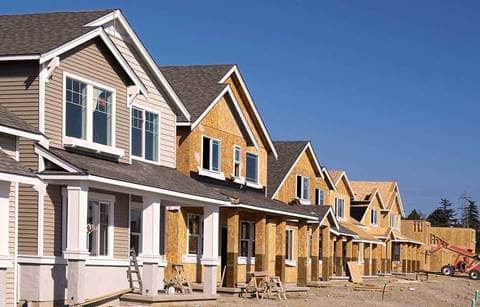When we talk about the senior living development process, there are generally five steps:
- Programming and planning
- Design and validation
- Bidding and finance
- Construction and procurement
- Project closeout
At each step of this process, the organization’s owner and staff have a responsibility to be involved — but it often comes as a surprise exactly how many new responsibilities land on your shoulders and theirs.
If the additional responsibilities weren’t enough, the technical information you’ll need to master is quite complex. Even the best facilities departments can get out of their depth when trying to assess the feasibility of a development project, choose the correct delivery method, develop construction cost mitigation strategies, and deliberate on change orders — among many other tasks we’ll cover in this article. You will be expected to go toe to toe negotiating the complex design, construction, and legal aspects of the project, such as the responsibility for costs and delays. The large professional firms you’ll be working with are educated and trained to protect themselves; typically, this is way outside the expertise of facility maintenance and repair teams and could cost you millions in assumed responsibility.
One option to help alleviate the burden is to engage a development advisor. Development advisors may also be known by other names such as project managers, program managers, development consultants, or owner’s representatives.
But don’t confuse them with construction managers or architects — they have very different roles. Put simply, development advisors act as fiduciaries for their clients, with the role of bringing to your team the technical expertise needed to avoid pitfalls, overcome challenges, and make informed decisions throughout planning, design, and construction.
Without a development advisor to facilitate project-related tasks, both the strategic and ongoing responsibilities of planning and overseeing a project will fall to you and your staff. Those tasks can be loosely grouped by the step of development. This article will help you determine whether your project and organization will benefit from a development advisor.
Programming & planning

The first step of senior living development involves master programming and master planning with the ultimate goal of defining the project, confirming feasibility, and creating a high-level financial pro forma. Decisions made in predevelopment are arguably the most complex, have the greatest impact on success, and pose the most risk to your organization.
The following major milestones occur during this step, requiring facilitation from your internal team unless you engage a development advisor to oversee the process:
- Project planning and definition
- Strategic project planning
- High-level financial pro forma with operations
- Project estimates and site fits
- Site due diligence
- High-level building and site development
- Validation of the program and feasibility
Questions to ask: Who has the necessary capabilities to guide conversations around growth or repositioning? Who can lead your organization through a strategic process to define the project and pro forma and make it dynamic enough to test multiple iterations quickly? Who will evaluate the site for development and confirm the feasibility of your plans?
If your organization doesn’t have an in-house resource for these functions, a development advisor can help guide your internal facilities and leadership teams to make financially and strategically sound decisions from day one.
Design & validation

The second step of development covers a lot of the same activities as the first at a deeper level. You’ll begin to refine the plans roughed out in step one and prepare all the information necessary for bidding and financing in the next step. Protecting the budget from scope creep during design and leading conversations around value engineering are the two key technical functions of this stage. Today’s construction market brings with it additional procurement and cost challenges that need to be addressed early as well — you can learn more here.
The design and validation phase encompasses schematic design, design development, and the creation of construction documents. Effective communication is crucial to prevent delays. It’s essential you equip the design team with all the necessary information they need and know what to hold the team accountable for at each stage of design. This ensures you receive full value from each consultant, you have the required details to make informed decisions before moving to the next design stage, and the team maintains alignment on budget and schedule.
The following major milestones occur during this step, requiring facilitation from your internal team unless you engage a development advisor to oversee the process:
- Full market study
- Team assembly — for both the architect and the contractor
- Site planning and zoning
- Design phases and estimates
- Value engineering
- Owner vendor proposals
- Financial feasibility validation
Questions to ask: Who has the right level of knowledge and expertise to manage the team selection process and verify fees for fairness? Who has the relationships to address challenges with zoning? Who can lead us through value engineering exercises that meaningfully optimize costs while still supporting our vision and the value the consumer has with the final product? Who is coordinating all the resident finish selections and upgrades with the team?
A good development advisor will help you set guardrails for the project to help the architects understand your vision within the budget constraints defined in the pro forma. Because development advisors have a fiduciary responsibility to the client, they’re incentivized to help you meet your real estate and facility goals cost-effectively, treating your project funds with the same care and diligence you would. The savings they help produce go back into your project, not their pockets.
Bidding & financing

Of all the stages of development, the third stage is where projects tend to run into the most trouble. The six tasks in this list must be completed at the conclusion of the bidding and financing step to begin construction. However, each requires a different timeline to reach completion. Bidding could take two weeks or two months, depending on the quality of bids. Entitlement could take a year or more. Any delays — even in just one of these items — will delay the project’s start.
Major six milestone activities at this stage include the following:
- Entitlements
- Bidding
- Plan review and approvals through the municipality
- Final guaranteed maximum price (GMP), value engineering, and budgets
- Financial pro forma
- Financing coordination
Questions to ask: Have we identified all necessary permits and approvals required by the municipality and authorities having jurisdiction? For bidding, do we clearly define the scope of work, pricing structure, and potential change order procedures? Do we have a clear understanding of the plan review process, timing, and potential revisions needed? Is there any possibility of delays? Does the GMP clearly define all the project costs, including contingencies and allowance? Does the project meet the lenders' criteria for loan approval, and have we mitigated any potential risks?
Entitlements, municipal approvals, and financing bring with them a variety of challenges and delays that many organizations cannot overcome without help. A development advisor is especially critical at this stage of the process to help move the project from the drawing board to reality. A development advisor can ensure everyone on the team is clear on what information is required from them and how much time each task needs to be finalized. Also, during these challenging times of construction cost increases and delays, the best development advisors can project forward the likely need to have pre-priced items to pull out of a project if needed, without delaying the closing.
Construction & procurement phase

The fourth step of development starts with groundbreaking and mostly includes day-to-day oversight of the construction process and procuring technology, furniture, fixtures, and equipment. It’s important to have a dedicated resource to monitor the project’s program, budget, and schedule; manage risk and proactively address issues; lead project meetings; ensure timely flow of information; and manage communications with all stakeholders.
During construction, these milestone activities must be accounted for:
- Construction oversight
- Change order management
- FF&E coordination and installation
- Technology coordination and installation
- T-minus open operational coordination
Questions to ask: Who will review, assess, and approve change orders, including communicating their impact on scope, schedule, and budget to the appropriate parties? How can we manage the invoice and payment application process? Who can maintain oversight of the construction while we prepare to open?
This stage is a critical tipping point for your internal staff — as the walls go up, planning for opening begins to split your focus between construction, operations, and marketing. It’s easy to lose sight of budget and schedule management and oversight. A development advisor can bring to the table financial management and project management software (and corresponding expertise) to report on budgets/schedules and publicly display project health to various stakeholders (leadership, boards, investors, staff, etc.).
Preopening & closeout phases

The preopening and project closeout step is where the heat really kicks up as you speed toward opening. Your project has reached substantial completion. Your construction team will be working through its punch list. There are a lot of boxes to check for the construction closeout at the same time you’re completing your own list of operational T-minus action items.
It’s crunch time, so here’s what you can expect to face preopening:
- Punch list oversight
- Commissioning
- Staff training
- Warranties and as-built documentation
- Inspections and approvals
Questions to ask: Who can confirm all of the expected close-out activities are completed timely? Who will manage the commissioning, inspection, and approval processes? How do we address lingering items and payments while overseeing the T-minus and preopening activities? Who is ensuring the owner is billing the residents for all the finish upgrades?
Internal teams greatly benefit from a development advisor, who acts as a reliable expert dedicated to the project — regardless of other operational tasks. Less time spent on the capital project minutia allows you and your staff to continue to focus on opening the new facility while the development advisor manages the temporary extra work of the project accordingly.
Managing your internal resources
A large construction project is a juggling act involving multiple teams of people, complex processes, nuanced skills and knowledge, and high stakes — but with the potential for great rewards for your organization. Ultimately, the decision to engage a development advisor comes down to this: Does your internal team have the time and predictability in their schedule to manage a multi-million capital project while also preparing to open a new facility?
This list gave you an overview of the breadth and depth of work needed to manage a development project. However, these steps are by no means the only ones you undertake during a project, nor do they always fall in this order. The development process is not linear; the five steps mentioned overlap and require continuous planning, consensus building, reevaluating, and recalibrating prior to and during each step. This is especially true when there are multiple phases of construction over the course of several years.
Before committing to a development project, executives and boards should understand the extent of extra work and expertise needed to successfully plan and manage a project. It’s common to need additional resources to allow your staff the bandwidth to keep operations running seamlessly during development. That’s why a development advisor exists — to give your organization extra resources and technical expertise so you can effectively plan for and manage the intricate details and day-to-day construction activities of large capital projects. You won’t regret the help: the best development advisors provide a positive ROI for the cost of their services.
If you’d like to learn more about the development process, download our related white paper.



